Years ago I was heavily invested in the 7.2V Makita cordless drills. Remember this one?
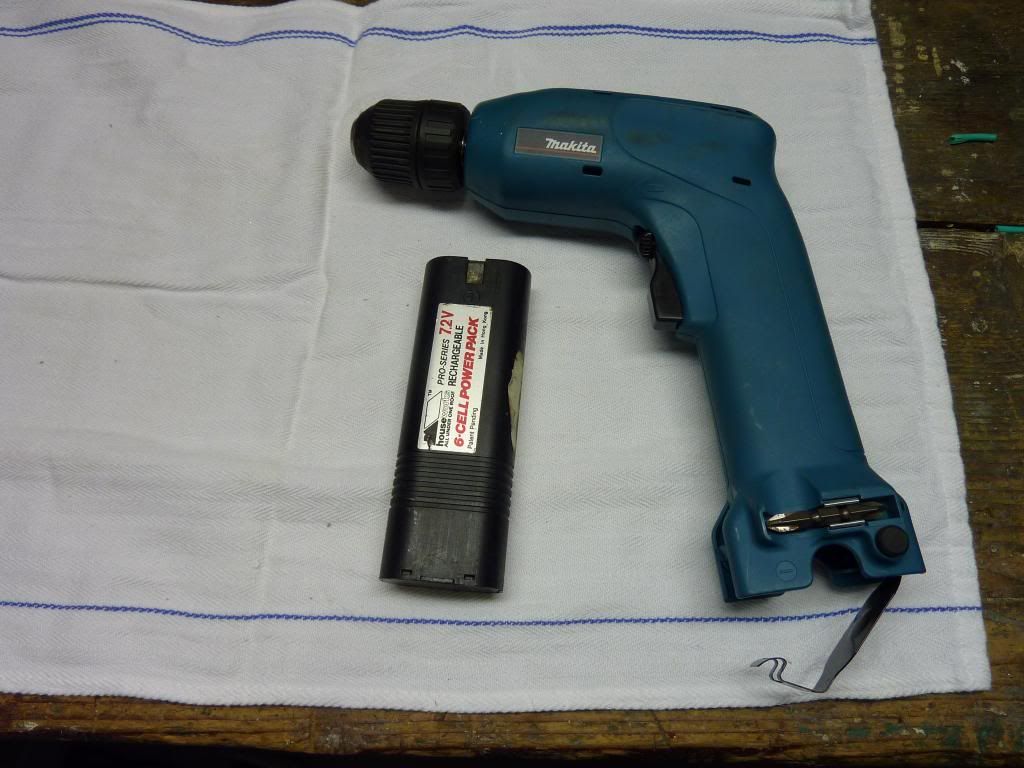
But wait, that is NOT a Makita battery you say? Well it’s not! As many of us have witnessed, cordless drill batteries do not last forever. That’s been true for NiCad, NiMh and Li-Ion. I was amazed when one day I was in BJ Wholesale club and saw this flashlight for sale.

I noticed immediately that this rechargeable flashlight ran on its own Makita Battery pack clone. Those batteries were a perfect copy of the Makita! Made in Hong Kong. How could they get away with that, I asked myself. As you can probably guess, back then a replacement battery, as now, just cost too much. Made it hard to justify buying them. But this flashlight-battery combo was only $7.50! So I bought one and tested it out. The cell was not quite as good as an original Makita, but is better than some of my worn out ones. I went back for more but there were only 2 left. I bought those, and never saw any more of these anywhere else. I have had a number of those Makitas over the years, but eventually all of the batteries ran out. I lost one of the drills, ran over another with the snowblower. I have 2 left, one is a single speed that I do not care for, and the one above. I remember that it had some real power, it could snap 1/4’ lag bolts rather than go into a full stall. Wouldn’t it be interesting if I could convert the battery pack to Li-Ion?
Earlier this year I got a hold of 20 IMR’s courtesy of this post
These cells pack a punch and would be great for this mod. For now I will just do a proof of concept, hack something together quickly to see if it is feasable. Here is a bunch of pics of what I have.
The flashlights, useless now, but I will keep them for now. In the future, who knows? I do know this, that If I throw them out, later I will wish I didn’t!

The old chargers, useless now. notice I had a 12V car plugin. That was a hot setup back then!
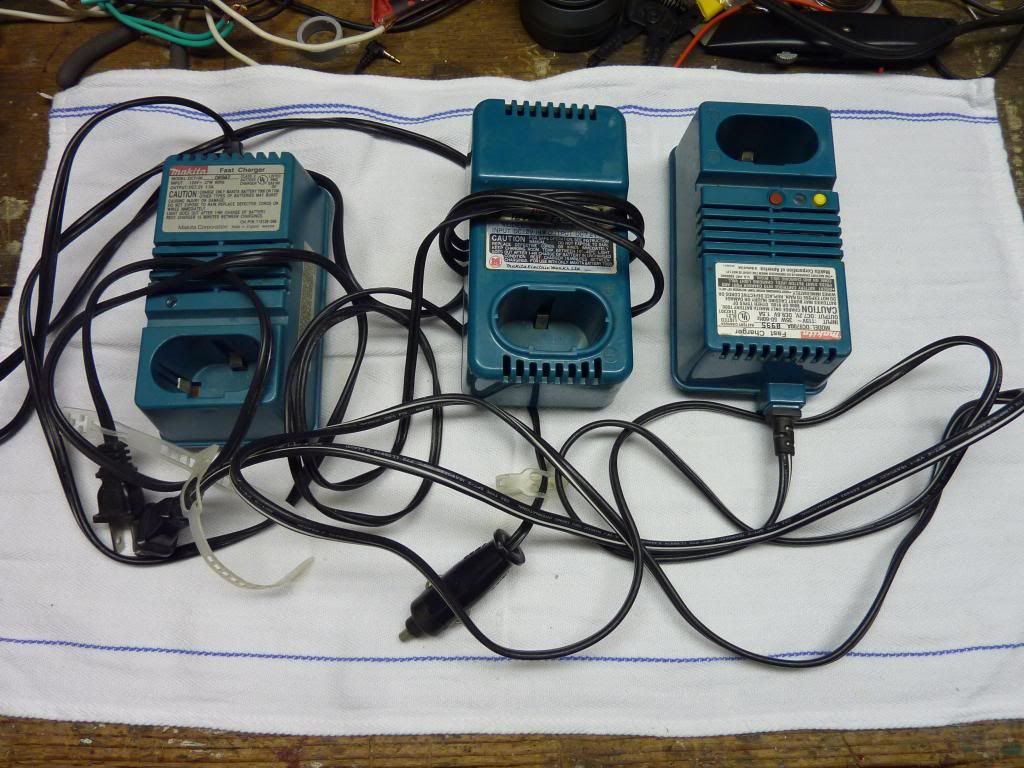
My old, worn out cells.
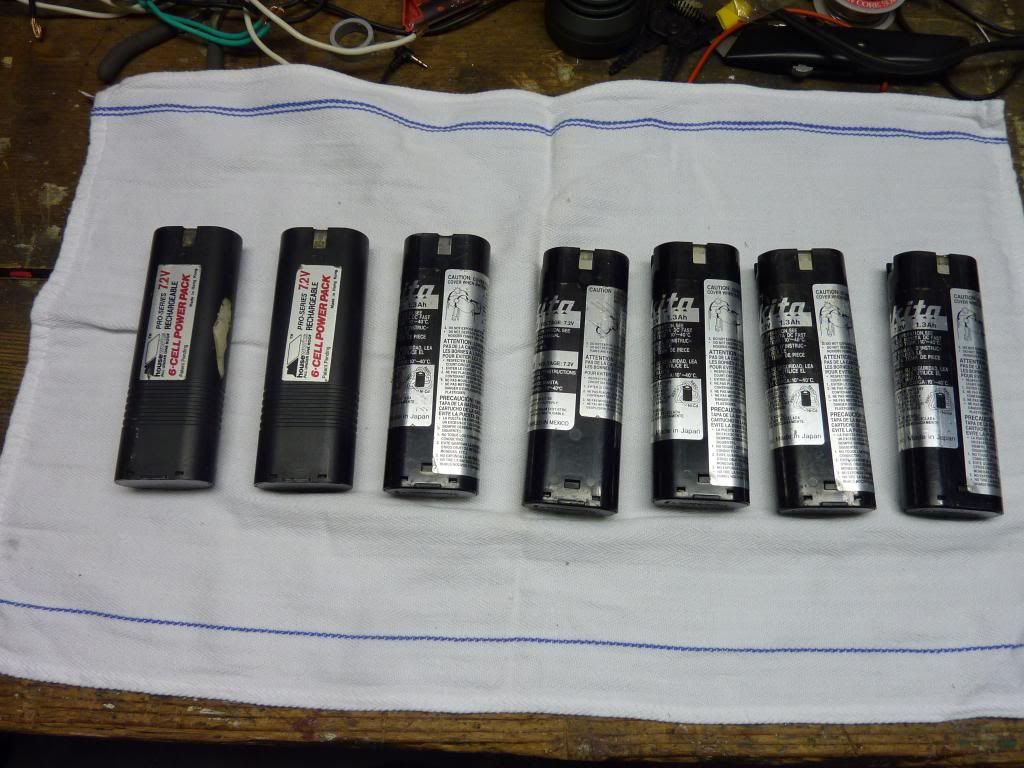
Comparisons of the Makita pack and the clones


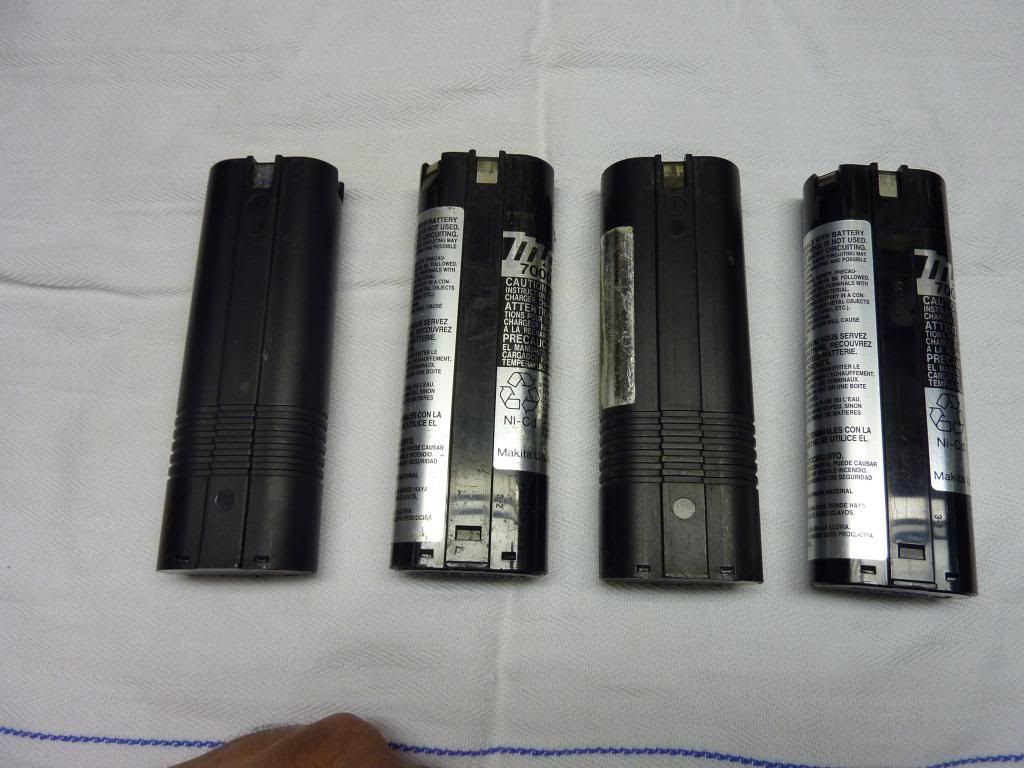
I stripped the cells out of 1 of each battery pack. First the cells from the Makita
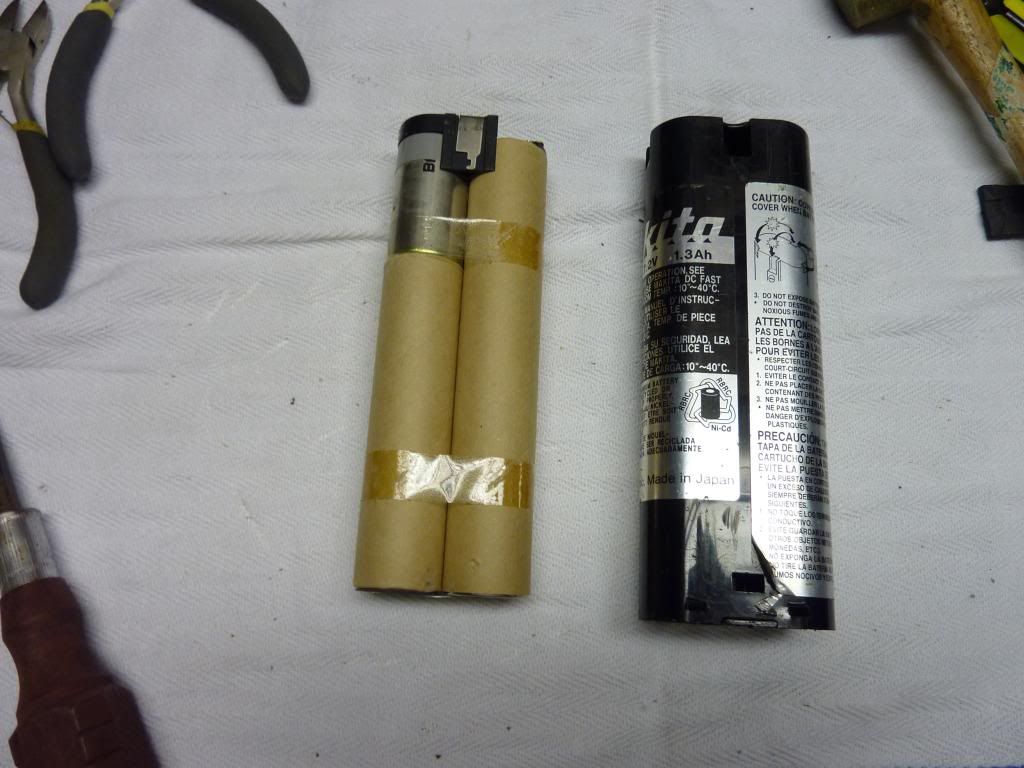
Now the clone. How about that, Made in Japan!
All cells are sub C NiCad, no surprise here.

The tops of the 2 packs. The Makita is on the right and the clone is on the left. I decided to use the top terminals from the clone as they are soldered and easier to work with.

Now remember at this point I am just going after proof of concept. I will now soldier 2 IMR 18650’s together to see if it will work
Soldiering the cells to the top connectors

I plan on using 3/4 inch pipe to sleeve the cells. Here is one in place.
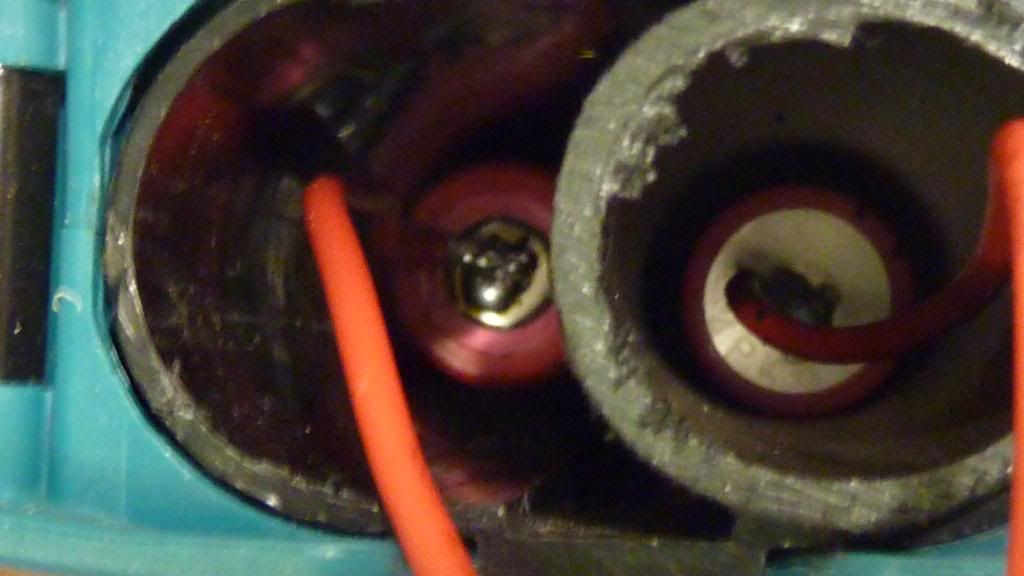
For the test I will connect 2 IMR’s in series for 8.4V. This drill should really perform at 8.4V, 1.2V more than stock.
I put the pack in the drill and made a short video of the drill performing as I suspected it would. I buried a 2 1/2” deck screw edgewise into my workbench!
More to come, I will have to install some over current protection and a way to charge the cells in the pack. I am planning on using 2 of these. One for each cell. I will have to charge each of the 2 cells individually.
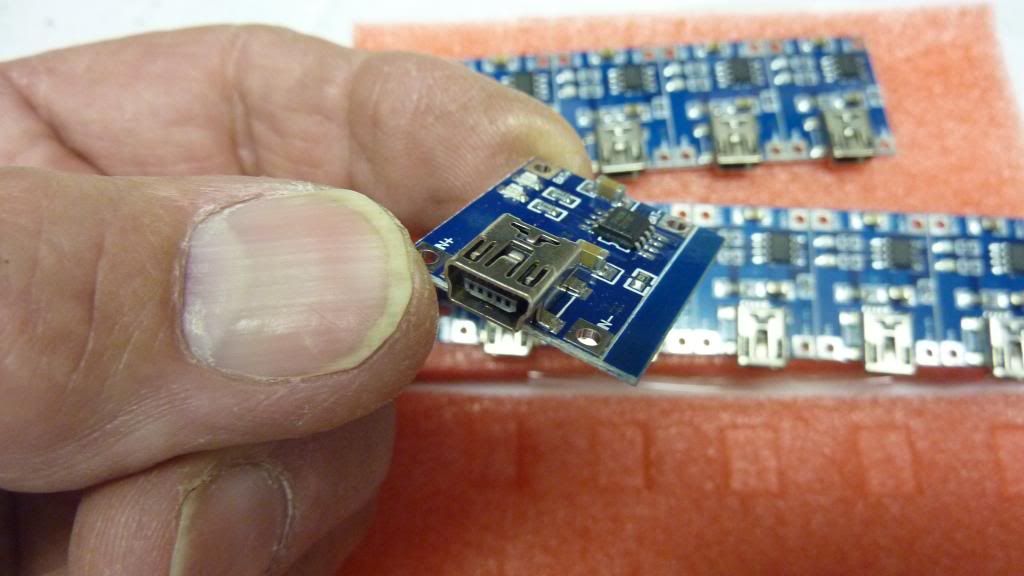
http://www.ebay.com/itm/10pcs-Mini-USB-Lithium-Battery-Charging-Board-Battery-Charger-module-5V-1A-/370800719607?ssPageName=ADME:L:OU:US:3160
If anyone objects to a cordless drill mod on a flashlight forum, just remember that some of the parts are coming from a flashlight. Besides, I am planning on adding an LED to the trigger. Feel better about it now? ![]()